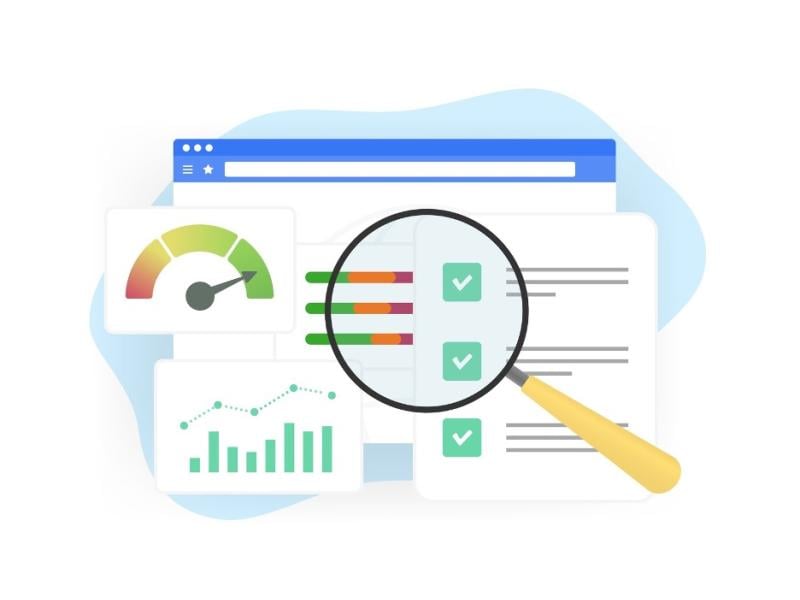A well-designed, user-friendly website drives engagement and maintains a strong online presence. Whether you’re an association, manufacturing enterprise, or life sciences company, an outdated website with poor functionality can be a significant barrier to your growth and cost you valuable opportunities. A website redesign may be all you need to create an online buzz around your brand. It provides an opportunity to improve online visibility and user engagement and boost sign-ups or sales.
This guide will look at strategically planning a website redesign, ensuring that every decision has clear goals, aligns with your objectives, enhances UX, and ultimately drives results. With our deep experience in the association and manufacturing industries, Unleashed is able to redesign, rebuild, & customize your digital presence to your stakeholders.
Why Strategic Planning Is Crucial for Website Redesign
Associations, manufacturing businesses, life science companies & healthcare providers have unique website needs beyond driving sales. Strategic planning is vital to any website redesign process to ensure that the new site tightly aligns with the organization's goals and future strategy. Without this alignment, the redesign risks becoming an isolated project that fails to deliver meaningful value.
Strategic planning helps identify the true need for a website redesign. While it's easy to assume a redesign is necessary, a thorough assessment of the current site's performance, user feedback, and business requirements is crucial to justifying the investment. Strategic planning uncovers the specific pain points, opportunities, and requirements that should shape the redesign.
Some of the key reasons you may require a website redesign include:
- Poor user experience, including confusing navigation, substandard accessibility features, or complicated member and client portals.
- An outdated, unappealing design. This can make your organization appear unprofessional or behind the times. In addition, you will miss out on important new tech integrations and functionalities.
- Lack of mobile responsiveness. A website that is not mobile-friendly or responsive can severely limit accessibility, engagement, and conversions.
- Performance issues like slow loading times, broken functionality, and other technical problems frustrate and drive users away.
- Poor search engine visibility.
- Problematic product presentation and inventory integration on manufacturing websites.
- Sub-par website performance, such as non-compliance and poorly designed or slow patient portals on healthcare websites.
- Security gaps and poor research dissemination in life sciences websites.
What Is a Website Redesign Strategy?
A website strategy is a comprehensive plan that guides your team through the entire website development, maintenance, and redesign process—from the initial idea to the final delivery. The website strategy outlines your organization’s core purpose, target audience, and desired user experiences. It then defines the key steps to optimize user engagement, achieve your objectives, and meet user needs.
Key elements of a website redesign strategy include:
- Design requirements such as personalization, localization, accessibility, responsiveness, and intuitive interfaces.
- Target audience research.
- An action plan to achieve and monitor specific and measurable goals.
- Budget and the identification of available resources.

Strategic planning lays the groundwork for the website to remain effective long after launch. It considers factors like evolving user needs, emerging technologies, and future business plans to futureproof the design and functionality. This roadmap is key to maximizing the return on the redesign investment and avoiding costly, ineffective projects.
Benefits of Strategic Planning for Website Redesign
A comprehensive website redesign strategy can ensure cost effectiveness, enhance user engagement, improve the user experience, boost brand reputation, streamline the customer journey, and increase online visibility. However, there are also industry-specific benefits to strategically planning your website redesign.
A strategically planned website for associations can better facilitate member interactions, encourage participation in programs and events, and foster a stronger sense of community. This helps drive member retention and growth. The strategy also defines the key features, content, and functionality, ensuring the website is a powerful and efficient tool for users.
Manufacturers will benefit from identifying ways to optimize functionality, such as online ordering, inventory management, and customer support tools. This improves operational efficiency, staff productivity, and supply chain communication and guides customers more effectively through the sales funnel.
With careful planning, life science organizations can better facilitate interactions with global stakeholders, such as researchers, clinicians, patients, and investors. The website strategy focuses on effectively communicating complex scientific information in a clear, accessible, and engaging manner. This enhances the organization's ability to educate and inform its target audiences—potentially increasing recruitment and retention for critical research initiatives.
For healthcare organizations, a strategically planned website can provide patients with a seamless, user-friendly experience that makes it easy to access information, schedule appointments, and engage with healthcare professionals. In addition, appointment scheduling and telemedicine capabilities improve operational efficiency and staff productivity.

By identifying ways to secure data portals, enhance resource libraries, and improve regulatory compliance tools, organizations can improve operational efficiency and staff productivity.
Initial Steps in Building a Website Strategy
Before starting strategy and project planning, you must identify some foundational elements.
1. Defining Business Objectives
The first step is to clearly define key organizational or business objectives that the website needs to support. This could include goals like:
- Increasing membership enrollment and retention
- Improving event registration and attendance
- Boosting non-dues revenue streams like sponsorships, advertising, and eCommerce
- Improving compliance
- Streamlining internal processes like member management, event planning, content publishing, and order management
- Providing a user-friendly experience that meets the evolving needs of members and prospective members
Unleashed documents these goals in a Business Requirements Document (BRD) to ensure clarity for all stakeholders regarding the strategic path forward & as a basis for defining functional and technical requirements that are critical for website redesigns.
2. Identifying Stakeholders
It's crucial to identify all the key stakeholders who will be involved in or impacted by the website redesign. This typically includes:
- Executive leadership to align with high-level organizational goals
- Marketing and sales teams to represent customer/member/prospect needs
- IT and web teams to assess technical requirements and capabilities
- Subject matter experts from across the organization
- External partners like agencies, vendors, members, or customers
By involving cross-functional teams in the decision-making process, you can create a shared understanding of the user experience and how it supports broader organizational objectives. This alignment enables more effective resource allocation and ensures that the user perspective is consistently considered in strategic planning and execution.
3. Establishing Project Timelines
- Setting realistic timelines for the website strategy and redesign project is essential. This includes:
- Defining key milestones and deadlines for research, planning, design, development, testing, and launch.
- Allowing sufficient time for stakeholder input, reviews, and approvals at each stage.
- Building in contingency time to account for unforeseen challenges or delays.
- Coordinating the website project timeline with other related initiatives.
Journey Mapping and Persona Creation
Personas represent the key user archetypes and their specific goals, pain points, and behaviors. They are created through research, such as user interviews, surveys, and analytics data. Journey maps plot out these personas' step-by-step experiences when interacting with the website and brand. They uncover opportunities to optimize the user experience and remove friction.
Together, personas and journey maps provide a deep, empathetic understanding of the target audience. This insight shapes every website redesign aspect—from information architecture and content strategy to visual design and functionality. It ensures that the new website is laser-focused on meeting the real needs of your organization's most important users.
For manufacturers key user personas largely include B2B buyers and distributors. Whereas, for associations, life science, and healthcare organizations, key user personas may include:
- Current members looking to access resources and network
- Prospective members researching the benefits of joining
- Event attendees
- Industry professionals seeking thought leadership and educational content
- Sponsors and advertisers
- Researchers and scientists exploring the latest industry developments
- Healthcare providers researching new treatments and technologies
- Caregivers/patients seeking information and support
- Investors and partners evaluating potential opportunities
- Regulatory bodies reviewing new products and clinical trials

The customer journey map for these personas would, for example, explore their step-by-step experiences, including:
- How they first discover the organization and its offerings
- How they search for the information they need
- The decision-making process to join, attend an event, or schedule an appointment
- The signing-up process or ease of booking and attending an appointment
It’s important to map out the various journeys all the identified personas may take, as this will differ for every user type. For instance, doctors, patients, administrators, investors, and job seekers will all have a different journey map since each one is visiting the website with a different end goal in mind.
Content Strategy and Site Mapping
The next crucial step is developing a comprehensive content strategy and site map for the website redesign. This involves:
Inventorying and auditing the existing website content
Determining the optimal content types and formats, while considering SEO optimization
Aligning content with the defined business and user goals o Structuring the site architecture and navigation to provide a seamless user experience The site map reflects these priorities by outlining the hierarchy, relationships, and user flows of all the website's pages and content. This serves as a blueprint for the redesign, ensuring the new site is structured in a logical, intuitive way.
The site map for associations might include sections for member resources, event information, industry news and thought leadership, directories, and online communities. Manufacturing companies, on the other hand, may focus the site map on product catalogs, technical specifications, customer support, and eCommerce functionality.
Life science companies may prioritize research and clinical trial data, regulatory information, secure login for collaborators, and data analytics tools. We are able to work with experienced life sciences professionals to produce tailored digital content for your life sciences clients. In the adjacent healthcare sector, hospitals and physician practices would likely emphasize patient education, provider directories, online appointment booking, HIPAA-compliant forms, and health plan information.
Wireframing and Designing the Website
Wireframing is the process of creating low-fidelity, interactive prototypes that map out the structure, layout, and functionality of web pages. Wireframes serve as a blueprint for the visual design and development of the website and play a key role in achieving design objectives for different sectors.
Associations
For an association website redesign, the focus should be on fostering a sense of community and enabling interaction among members. Wireframes should prioritize features that support community-building, such as discussion forums, member directories, and event calendars. The process should emphasize intuitive navigation and content organization to facilitate key member tasks, like accessing resources, registering for events, and engaging with the online community.
Manufacturing
In the manufacturing sector, wireframes should focus on making it easy for customers to compare products and quickly place orders. They should also optimize the user experience for tasks like product research, technical specification access, eCommerce website functionality, and customer support. Wireframes also provide a way to plan layouts that best showcase the company's capabilities, industry expertise, and custom solution offerings.
Life Sciences
In the life sciences sector, wireframes should emphasize data visualization, collaboration features, access to research data, clinical trial information, regulatory resources, and investor relations content. This could include interactive charts and graphs, file-sharing capabilities, and real-time co-editing tools. Wireframes also help map the best ways to highlight the organization's scientific expertise, product pipeline, and career opportunities.
Healthcare
Healthcare organization websites need wireframes that streamline effortless patient journeys for scheduling appointments, accessing medical records, and researching conditions and treatments. Wireframes also explore ways to provide educational resources, enable provider searches, and facilitate health plan management. They should prioritize accessibility and mobile friendliness with large, easy-to-tap buttons, a clear information hierarchy, and responsive design.

Regardless of industry, effective wireframing ensures that the website redesign aligns with the organization's strategic goals and user needs. It also provides a solid foundation for the subsequent development phases.
Testing and Ongoing Involvement Post-Launch
Thorough testing is critical before launching the new website. This includes:
- Usability testing with target user groups to identify and resolve any UX issues
- Technical testing to ensure all functionality, integrations, and content are working properly
- Content review to verify accuracy, consistency, and alignment with brand guidelines and industry regulations
- Security and performance testing to validate the site's stability and speed
Once testing is complete, the website can be launched with a well-planned rollout strategy. This may involve a phased approach, strategic communications, and a support plan for any user questions or issues.
The work is not done after launch. Through our Long-Term Partnership solution, the Evolving Service Plan (ESP), Unleashed is able to provide continuous post-launch support to execute security updates, coding maintenance requirements, and strategic advisory to maximize full use & value of your website. Continuous monitoring, optimization, and content updates are essential to keep the website relevant and effective for your stakeholders. Consider the following industry-specific post-launch activities:
- Associations: Regularly monitor member feedback and engagement metrics to identify areas for improvement and ensure the website continues to meet the evolving needs of your community.
- Manufacturing: Update inventory systems, supply chain tools, and product information to keep the website accurate and up-to-date.
- Life Sciences: Incorporate feedback from global collaborators and integrate new research tools to ensure the website remains a valuable resource for scientists, clinicians, and investors.
- Healthcare: Adapt the website to comply with new regulations and incorporate feedback from patients and providers to enhance the user experience.
Regular analytics review, user feedback collection, and iterative improvements will ensure that the redesigned site continues to deliver value long-term.
Securing the Long-Term Success of Your Website Redesign
The key to a successful website redesign is to align clear business objectives, user-centric insights, and a thoughtful content and technical strategy. Whether you're an association, manufacturing, life sciences or healthcare organization, a well-crafted digital roadmap will help you optimize the customer experience, streamline operations, and boost efficiency.
At Unleashed Technologies, we have a proven track record of strategic and successful website development and website design for clients across diverse industries. Our team of experts can guide you through every step of the process, from initial assessment to strategy, implementation, and ongoing optimization, ensuring you unlock the full potential of your digital assets. Let's connect and explore how a strategic digital roadmap can drive your organization forward.


